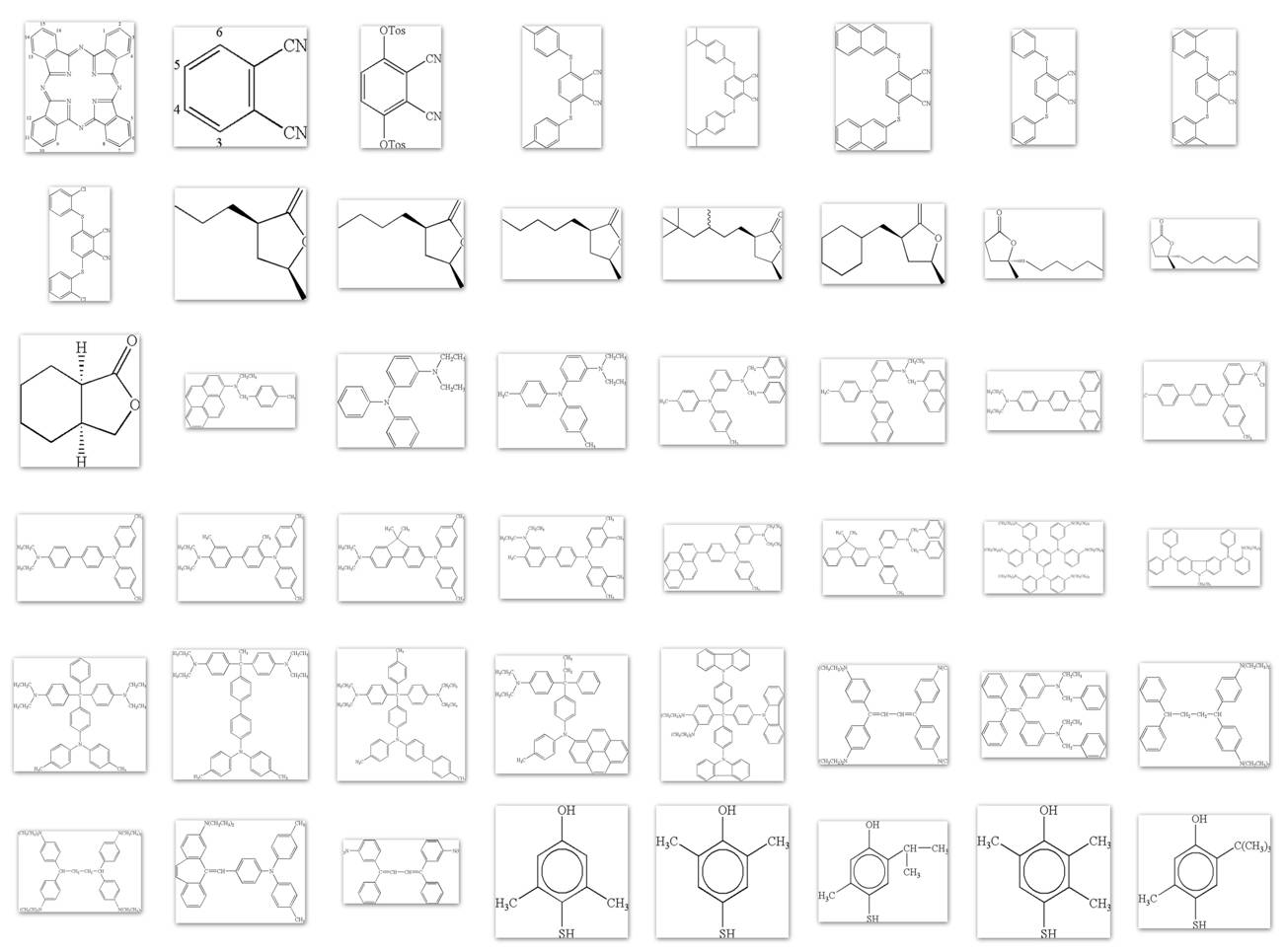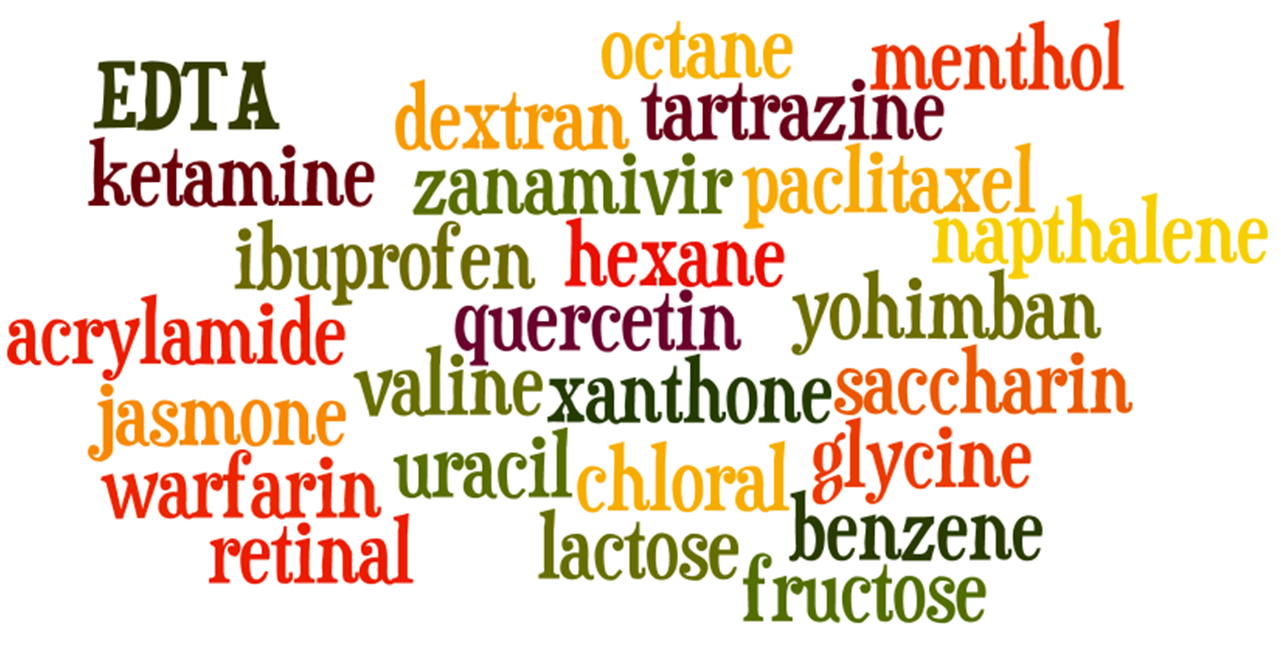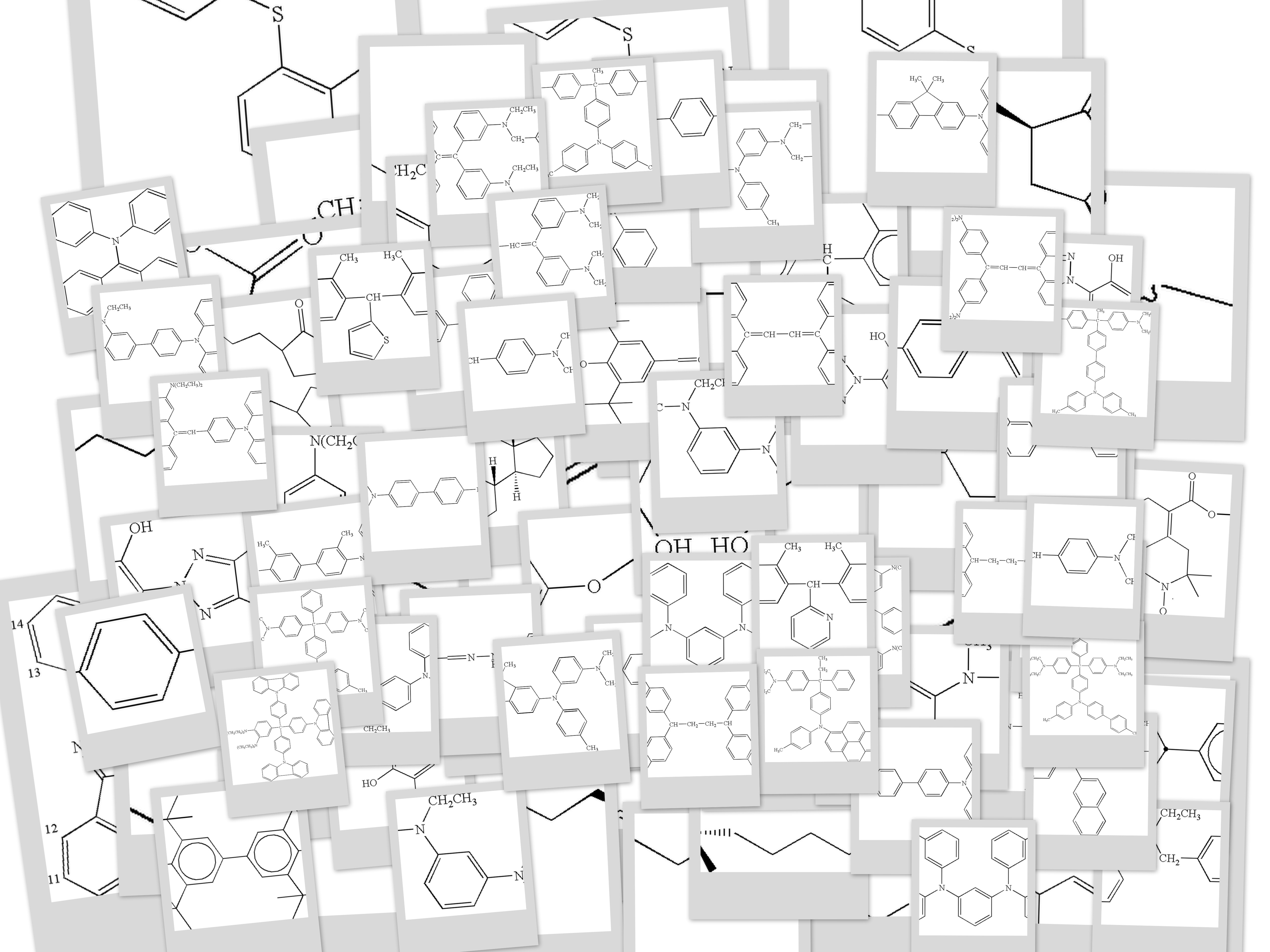Drug discovery projects often require analysis and visualization of large number of chemical structures to identify new drug candidates. Growth of chemical databases (Ref. 1) has made millions of chemical compounds available at chemists's fingertips; however, visualizing so many structures in one go is a major challenge. Usually one would scroll through a simple 'list view' or a 'grid view' (see figure 1) of chemical structures, but that would be a time consuming process for a large number of molecules.

Figure 1 : Illustration showing grid view of chemical structures
In order to address these issues, recently Ertl and Rohde proposed 'molecule cloud' approach to visualize a large set of molecules (Ref. 2). This method was inspired by word cloud (see figure 2) visualization technique often used to depict key words in textual content.

Figure 2 : Illustration showing a word cloud of chemical names
Using a simple word cloud (see figure 2) approach to visualize large number of chemical structures would lead to a messy pile of chemical structures (figure 3), so Ertl et al. decided to take a smarter approach. Since displaying individual molecule as a whole was difficult for a large number of chemical structures, they decided to display common substructures in the molecules in a layout which minimizes overlap between structure images. The size of each substructure image was scaled to the number of molecules containing that substructure in the chemical structure collection i.e. largest image corresponds to most frequent substructure.

Figure 3 : Illustration showing a pile of chemical structures in a random layout
Ertl et al. showcased the usefulness of their methods by rendering molecule clouds for chemical structures in PubChem database, ZINC database and CheMBL database. They also showed how to use color coding in molecule clouds to display biological activity or protein target classes.
Future Applications of Molecule Clouds
Interactive molecule clouds could be an useful starting point for finding chemistry articles with particular chemical structures in journal websites or in bibliographic databases. Molecule clouds could be an attractive way to interact with large number of chemical structures on mobile devices. It could also be integrated in chemical structure databases as an interactive visualization option apart from 'list view' and 'grid view'.
All the details about molecule cloud visualization of chemical structures can be found here.
References
--------------------------------
1. Chemistry's web of data expands
Richard Van Noorden
Nature 2012
http://www.nature.com/news/chemistry-s-web-of-data-expands-1.10328?nc=1341529052776
2. The Molecule Cloud - compact visualization of large collections of molecules
Peter Ertl and Bernhard Rhode
J Cheminformatics 2012
http://www.jcheminf.com/content/4/1/12


